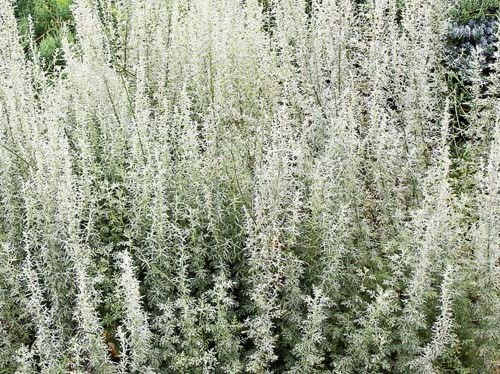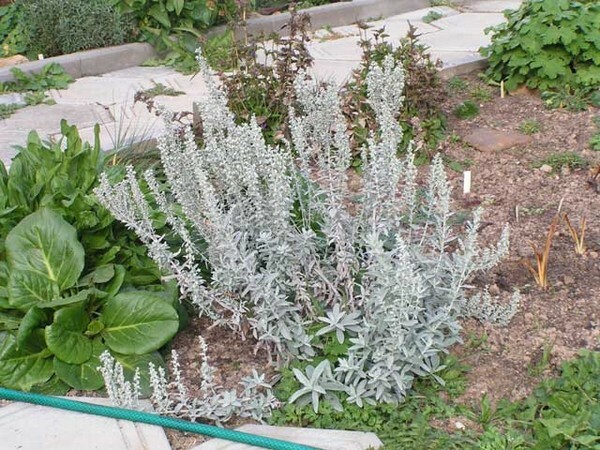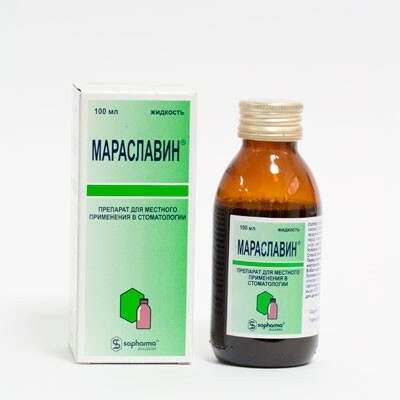The Latin name of the plant is Artemisia pontica, however, in many sources it is also known as Alexandrian wormwood, Pontic abyssin, white nephora, Black Sea, narrow-leaved, Roman wormwood. Unlike other species of wormwood Pontic has a strong fragrance and not so much bitter taste.
Description of the plant
This is a perennial herb that belongs to the family of Compositae or Astroids.
External structure
Like all plants belonging to the genus of wormwood, its root system is a rhizome - creeping, 1.5 to 3 millimeters thick. In height, this wormwood grows to 40-100 centimeters. The stem is erect and herbaceous, from below it is densely covered with small but rather strong foliage. The leaves themselves are twice peristo-dissected, the lower ones are attached to the stem by cuttings, the rest are sessile. The color of the lower white, the upper ones - grayish-green.

Flowering of Artemisia pontica in Pontian
The main flowering period of Artemisia pontica falls in August. In natural natural conditions, the plant is spread not only in the Caucasus and parts of Western Siberia, but also in the Crimea, as well as in the regions of the European part of the Russian Federation: in Nizhnedon, Volzhsko-Don, Volzhsko-Kama and Zavolzhsky regions.

Wormwood Pontic grows and blossoms, usually on the banks of rivers, slopes of river valleys, in forests, at the edges of glades, among steppe shrubs and in solonchak meadows.
The healing properties of the herbaceous plant
This species of wormwood is endowed with a number of valuable medicinal properties, while in folk medicine, mainly the juice and grass( ie stems, leaves and inflorescences) of this plant are used.
Widespread use for the treatment of diseases and the removal of their symptoms is explained by the presence of essential oils, rubber, lactone of cis-ortho-oxycinnamic acid( coumarin) and polyacetylene compounds in the cells of this wormwood.
It has been experimentally proven that the essential oil released from the plant has extremely amazing properties for the plant, namely, an analgesic and anti-inflammatory effect. As the concentration of oil in the medicines increases or decreases, Artemisia Pontic shows fungicidal and bacteriostatic activity. It can also be used as a source of azulene, an active ingredient that has antibacterial properties, soothingly acting on sensitive skin, protecting it from the corrosive effects of various environmental factors.
Important: infusions and tinctures, the main ingredient of which is the Pontian absidine, are well aid as an anthelminthic agent.
Very interesting is the fact that in Bulgaria this plant often serves as a composite of raw materials for making Maraslavin's widely used in the people. This combination drug, which perfectly disinfects, removes inflammation, prevents the occurrence of allergies, is an excellent tool for stimulating tissue regeneration.

Benefits of decoctions of wormwood Pontic
Decoctions of wormwood Pontic in folk medicine are widely used as an excellent expectorant, so they are extremely effective in diseases of the upper respiratory tract. In addition, they are recommended for use with problems with digestion, as they have a beneficial effect on the process of digestion and improve appetite.
Recipe: 1 teaspoon of chopped leaves, stems and inflorescences of Artemisia Pontic must be added to 300-350 milliliters of water. Then the resulting mixture is put on fire, bring to a boil and hold on low heat for 5 minutes. After this mixture should be allowed to infuse for about an hour in a dark place and carefully strain.
Recommended: Take this medication immediately before each meal, that is, 2-3 times a day, 1/3 cup.
Often such a decoction of wormwood works well for amenorrhea. It can also be used as a tonic for nervous disorders and fever.
Powders and other uses of wormwood
Powder from plant grass is often used as an excellent means for rapid wound healing. Inflorescences can be used in the form of poultices for tumors of the scrotum in men and inflammatory process in the vagina in women.
Lotion with wormwood powder is recommended for use in rickets in children.
Also, external use is indicated in the treatment of ulcers and small wounds on the body, irrigation with decoctions helps with chronic inflammatory processes of the oral mucosa.
Overdose of folk remedies based on Artemisia Pontic
In case of uncontrolled use of medicines, the main component of which is this plant, an overdose may occur. Excessive reception of broths or strong concentration of wormwood tincture can lead to food poisoning, hallucinations and even seizures.
It is extremely important to remember that the course of treatment with any medicinal product, including plant origin, should be limited and conducted after consultation with the attending physician. This will avoid undesirable consequences.
